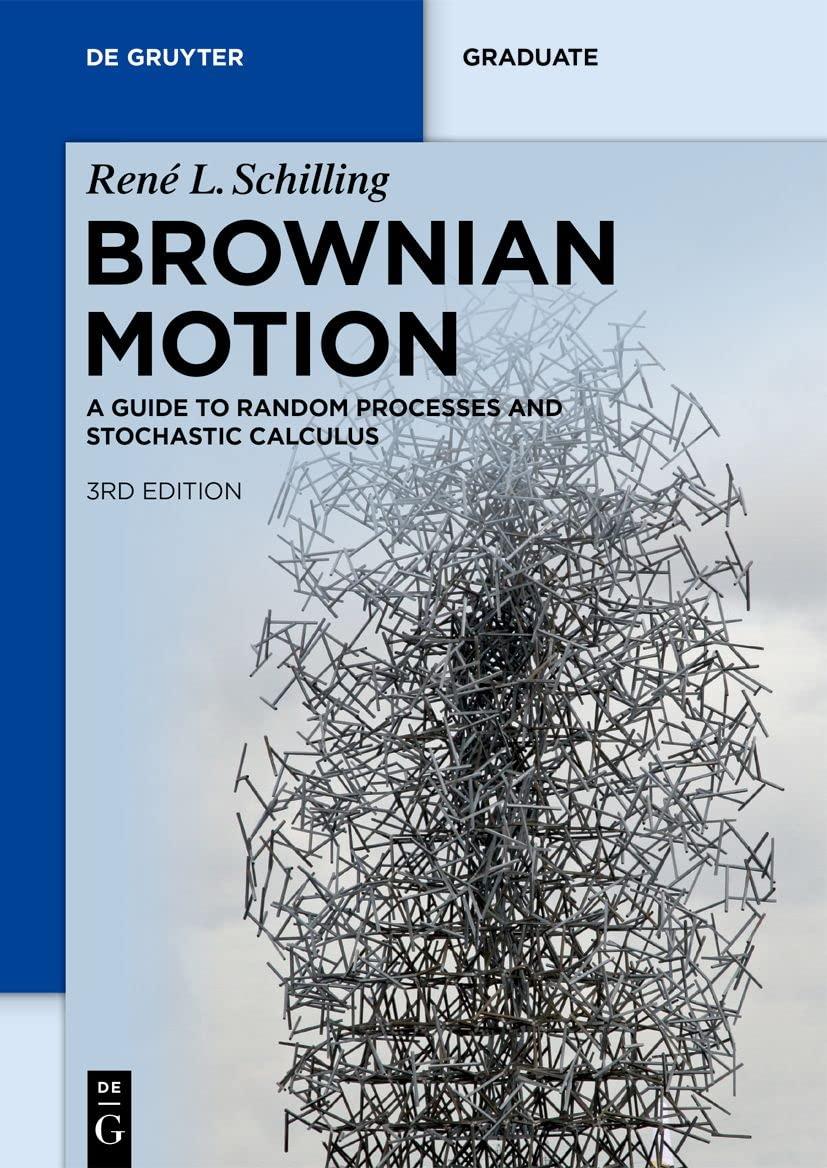Let (X=left(X_{t} ight)_{t geqslant 0}) be a one-dimensional process satisfying (B0), (B1), (B2). Assume, in addition, that
Question:
Let \(X=\left(X_{t}\right)_{t \geqslant 0}\) be a one-dimensional process satisfying (B0), (B1), (B2). Assume, in addition, that \(X\) is continuous in probability, i.e. \(\lim _{t \rightarrow 0} \mathbb{P}\left(\left|X_{t}-X_{0}\right|>\epsilon\right)=0\) for all \(\epsilon>0\). A function \(g:[0, \infty) \rightarrow[0, \infty)\) is said to be of regular growth, if there exist functions \(\kappa_{j}(\lambda), j=1,2\), such that \(\lim _{\lambda \rightarrow 1} \kappa_{2}(\lambda)=1, \lim _{\lambda \rightarrow \infty} \kappa_{1}(\lambda)=\infty\) and
\[\kappa_{1}(\lambda) g(t) \leqslant g(\lambda t) \leqslant \kappa_{2}(\lambda) g(t) \text { for all } \lambda \geqslant 0, t>0 \text {. }\]
Show that for every symmetric (i.e. \(X_{t} \sim-X_{t}\) ) process \(X\) and increasing \(g\) of regular growth
\[\int_{1}^{\infty} \frac{1}{t} \mathbb{P}\left(X_{t}>\frac{1}{3} g(t)\right) d t<\infty \Longrightarrow g \text { is an upper function as } t \rightarrow \infty .\]
Remark. \(X\) is a so-called Lévy process. Its paths \(t \mapsto X_{t}\) are not continuous, but they may have jump discontinuities which happen, however, never at fixed times. This is due to the continuity "in probability". See [231] and [235, Chapter X] for more on this topic.
Use the following inequality due to Etemadi (1985): \(\mathbb{P}\left(\sup _{s \leqslant t}\left|X_{s}\right| \geqslant a\right) \leqslant 3 \mathbb{P}\left(\left|X_{t}\right| \geqslant a / 3\right)\) which is true for any (not necessarily symmetric) Lévy process, cf. [235, Theorem 33.1, p. 209]. Symmetry is used to get an estimate for \(X\) rather than \(|X|\).
Step by Step Answer:

Brownian Motion A Guide To Random Processes And Stochastic Calculus De Gruyter Textbook
ISBN: 9783110741254
3rd Edition
Authors: René L. Schilling, Björn Böttcher





